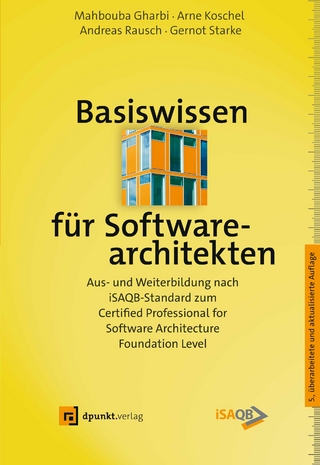
Intelligent Systems
Springer-Verlag New York Inc.
978-1-4613-6227-2 (ISBN)
1 Knowledge, Learning and Machine Intelligence.- 1.1 Introduction.- 1.2 Special Boxes for Special Tricks.- 1.3 Schools of AI.- 1.4 Tacit “Thinking ”.- 1.5 What Is a “Concept ”?.- 1.6 A Homework on “Making Clear ”.- 1.7 Formal Logic as a Tool for Thinking.- 1.8 Drug Design by Machine Learning.- 1.9 Visualization in Mathematical Thinking: Limitations of Logic.- 1.10 Mental Manipulation of Images.- 1.11 Thinking Without Thinking.- 1.12 Piloting a Flight Simulator.- 1.13 Conclusion.- References.- 2 Relating Images, Concepts, and Words.- 2.1 Introduction.- 2.2 Development of Perceptual Representation Schemes.- 2.3 Processing Implications.- 2.4 Evidence from Language for Different Kinds of Mappings.- 2.5 Large Scale Analogies.- 2.6 An Example of Representation Using Prototypes.- 2.7 Mapping.- 2.8 Assessment.- 2.9 Problems Remaining.- References.- 3 Methods for an Expert System to Access an External Database.- 3.1 Introduction.- 3.2 An Expert System for Motor Selection.- 3.3 A More Flexible Inference Engine.- 3.4 Discussion.- References.- 4 Perceptual Representation and Reasoning.- 4.1 Introduction.- 4.2 Perceptual Reasoning.- 4.3 Discussion.- References.- 5 Feature Based, Collision Free Inspection Path Planning.- 5.1 Background.- 5.2 Configuration Space.- 5.3 Inspection Path Planning Problem.- 5.4 Inspection Path Planning Algorithm.- 5.5 Inspection Path Planning.- 5.6 Conclusions.- References.- 6 Of Using Constraint Logic Programming for Design of Mechanical Parts.- 6.1 Introduction.- 6.2 Symbolic Descriptions with Constraints.- 6.3 Reasoning about Dimensions and Tolerances.- 6.4 Checking Design Rules.- 6.5 Conclusions.- References.- 7 Explanation Facility for Neural Networks.- 7.1 Introduction.- 7.2 Neural Network Explanations.- 7.3 Prolog Code.- 7.4 Example.-7.5 Implementation and Improvements.- 7.6 Conclusions.- References.- 8 Compile-Time Type Prediction and Type Checking for Common Lisp Programs.- 8.1 Introduction.- 8.2 The Type System.- 8.3 The Representation of Programs.- 8.4 Type Inference Rules.- 8.5 The Inference System.- 8.6 Examples.- 8.7 Related Work.- 8.8 Conclusion.- References.- 9 Cognitive Neuroethology: An Approach to Understanding Biological Neural Networks.- 9.1 Introduction.- 9.2 Determining Neural States.- 9.3 Determining Mental States from Neural and Behavioral States.- 9.4 Predicting Mental States from Neural and Behavioral States.- 9.5 Critique.- 9.6 Summary and Conclusions.- References.- 10 Generating Polytope Intersection Configurations from a Symbolic Description Using CLP(?).- 10.1 Introduction.- 10.2 Problem Formulation.- 10.3 Constraint Logic Programming.- 10.4 Notation.- 10.5 Algorithm.- 10.6 Implementation.- 10.7 Results and Conclusions.- References.- 11 Agent: A Modelling and Analytical Tool for VLSI System Architects.- 11.1 Introduction.- 11.2 The SP.1.- 11.3 Behavior.- 11.4 Structure.- 11.5 Physical Plan.- 11.6 Synthesis and Analysis.- 11.7 Conclusion.- References.
| Zusatzinfo | XVIII, 217 p. |
|---|---|
| Verlagsort | New York, NY |
| Sprache | englisch |
| Maße | 178 x 254 mm |
| Themenwelt | Informatik ► Software Entwicklung ► User Interfaces (HCI) |
| Informatik ► Theorie / Studium ► Künstliche Intelligenz / Robotik | |
| Mathematik / Informatik ► Mathematik ► Finanz- / Wirtschaftsmathematik | |
| Technik ► Elektrotechnik / Energietechnik | |
| ISBN-10 | 1-4613-6227-X / 146136227X |
| ISBN-13 | 978-1-4613-6227-2 / 9781461362272 |
| Zustand | Neuware |
| Informationen gemäß Produktsicherheitsverordnung (GPSR) | |
| Haben Sie eine Frage zum Produkt? |
aus dem Bereich


